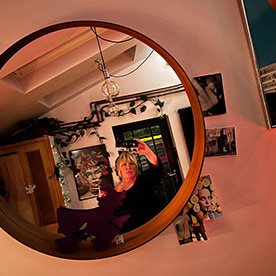How do I fix this over exposure in RAW please? Help!
Copy link to clipboard
Copied
Explore related tutorials & articles
Copy link to clipboard
Copied
In Camera Raw, start by dragging the Highlights slider to the left.
There may be recoverable highlight detail in the raw file.
Copy link to clipboard
Copied
Thanks Per, tried the highlights and all the sliders under light but not working 😞 Thank you though.
Copy link to clipboard
Copied
Additionally, you may also need to use negative exposure. Even with raw data, there are limits.
Copy link to clipboard
Copied
Thanks Stephen. Yes, I have done this before, especially with blue light in theatre situation. Should go on a course!
Copy link to clipboard
Copied
I see in another thread that you're using a Nikon camera.
I have a Nikon Z 7, and I usually work with the histogram enabled in the viewfinder. It's quite small and not too intrusive.
If you have a Z camera, press the DISP button on the back of the camera one or more times until the histogram appears.
The histogram does not show RGB channels and refers to a jpg, not the raw file, but it gives you an indication of possibly blown highlights.
If the histogram is bumped up to the right, the highlights will be blown in the jpg, but possibly recoverable in the raw file.
To be on the safe side, reduce the exposure a little, so that there is a little space on the right side of the histogram.
With some experience you'll be able to tell how much you can expose without blowing the highlights.
I have found that in some situations, the histogram will indicate a badly overexposed image, while the raw file is fine.
In other situations it's the other way round.
This will vary with the lighting conditions and the quality of the light, so you can never know for certain how far to the right the histogram can be. I suggest that you take a lot of test shots in different lighting conditions.
For more information, see Exposing a digital image.
Copy link to clipboard
Copied
"Fixing in post" has always had pitfalls; many attempts to adjust exposure result in a disappointing, flat, gray look.
Better to prevent while shooting. It seems like your camera metered on a dark area, resulting in blown-out highlights. No detail may exist.
Spot-metering would allow you to meter on an area that is closer to middle of the histogram. The hair, perhaps.
One fix in post might be to isolate areas -- the screen (?) above the player's head could be selectively darken or color changed.
What I have done in past trials like this is to promote the subject to a new layer, copy the layer, Paint in sampled colors, then use blend modes or masks to hide the blown out parts, revealing the fixed parts. Hard to say without actually having the raw file to play with. Playing with a JPG screen shot is a fool's errand, I'm afraid.
--editing to attach my try. I sampled the left ankle, then created a new layer with that color, then clipped to the layer below, then painted out the mask to reveal the player.
Copy link to clipboard
Copied
Thanks Larry, great advice, I am not good at spot metering, always looking at composition and in this scinario, producer gave me very little time to take some stills so was working too fast.
Copy link to clipboard
Copied
The fastest fixes in Adobe Camera Raw are what Per and Stephen said: Try reducing Highlights and then Exposure.
If those changes darken other areas of the image too much, use masks. For example, create a Person mask for the performer and lower Highlights just within that mask.
The scene is very high contrast, like many theater scenes are because of spotlights in a darkened theater, so for these I usually start with a preset that applies Highlights -50 and Shadows -50, and then I edit manually from there.
Copy link to clipboard
Copied
Great, many thanks for your advice Conrad, gonna try some masking.
Copy link to clipboard
Copied
Are you able to post a raw file? It will tell us more than a processed screenshot. Focus on the skin. If there is any info in one or two of the channels it may be recoverable, using the white and highlight sliders. However if it is completely blown then there would be nothing to recover and you would need to paint in texture.
Dave
Copy link to clipboard
Copied
there is nothing to recover :(. I have given up! the phone took better ones so using those for the promotional social media. Thanks though.
[PII removed]
Copy link to clipboard
Copied
Overexpose with blown out highlight, there is no more data to play with. If if may, my two cents are:
go for underexpose instead when you are in situation like that, at least you will have data to play with.
For Exposure Metering: go for spot metering. Depending of your camera model, as a exemple in the setting of like in the Nikon D850 you also have that great option of [ Highlight-Weighted Metering } it's especially for those types of photography, such as theater, concert, or situation, of a bright subject and dark background.
Of course ISO is your friend also the quality of your lens at least with a opening of f2.8, noise will be more present in the dark area that you can fix easily in post production.


